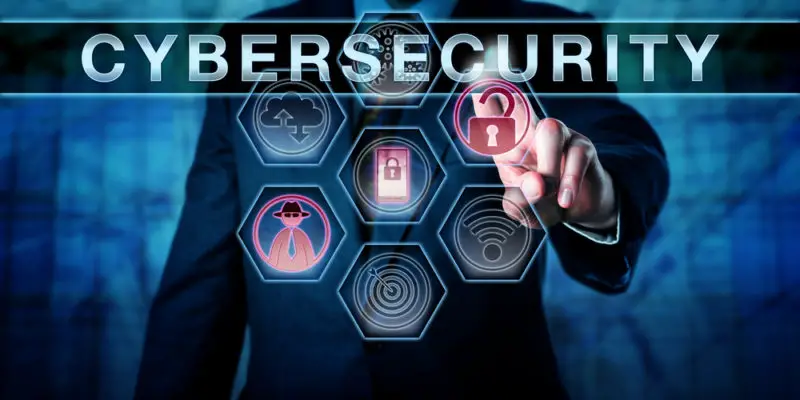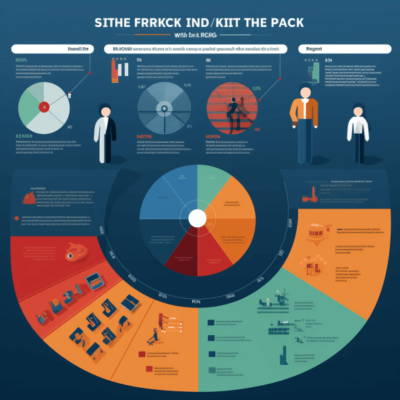Cyber threats loom large in the digital world, making it challenging for organizations to maintain cybersecurity. Implementing a comprehensive and robust cybersecurity strategy to counter these ubiquitous threats is imperative.
The National Institute of Standards and Technology (NIST) framework is crucial for cybersecurity. This guide, developed by cybersecurity experts, is a voluntary tool that helps organizations to understand better, manage, and mitigate cybersecurity risks.
Organizations can effectively protect themselves from cyber threats by following the guidelines laid out in the framework.
This discussion provides a comprehensive understanding of the NIST framework and its effectiveness in securing digital systems.
It covers various aspects, such as the five core functions of the framework, its role in managing cybersecurity risks, its practical applications, and ways to improve existing cybersecurity practices.
Understanding the NIST Framework
Understanding the NIST Framework: A Crucial Tool in Managing Cybersecurity Risks
Governments, corporations, and private citizens alike face an ongoing challenge to protect their sensitive information from malevolent entities in the cyber realm.
Managing these risks is paramount, and one tool stands out in its effectiveness: The National Institute of Standards and Technology (NIST) Cybersecurity Framework.
Originating from the U.S. Department of Commerce stalwart halls, the NIST Framework is a comprehensive set of voluntary guidelines designed to foster risk-based decision-making and cybersecurity risk management.
It’s a tool, a compendium of best practices that assists organizations in defining and achieving robust protection from cybersecurity issues.
The framework centers around Core, tier, and profile components. The Core is made up of five continuous functions- identify, protect, detect, respond, and recover- highlighting the life cycle of an organization’s management of cybersecurity risk.
Tiers describe the evolution of an organization’s cybersecurity practices. Profiles, on the other hand, cater to an organization’s specific needs, presenting a blueprint for improvement and alignment to business requirements.
The NIST Framework’s superb flexibility lies in its adaptability across different sectors, business sizes, and risk profiles. This universality positions the NIST framework as an instrumental tool in cybersecurity risk mitigation.
But why the emphasis on NIST’s role in cybersecurity risk management? To understand the crux of this question, one must understand the constantly fluctuating dynamics of the digital world.
Cyberspace is rife with nebulous threats that evolve with disquieting rapidity. Exploits, malware, and ransomware constitute only a fraction of these risks; new threats are conceived daily.
Commandeering this chaos demands a universal framework that incorporates best practices and encourages their adoption.
The NIST framework is specially designed for this task; it epitomizes a coherent, systematic approach to managing cybersecurity risks. Its strength is in its interactive nature, encouraging organizations to continuously learn, adapt, and enhance their cybersecurity postures.
An additional significant value of the NIST framework lies in its focus on communication. Clear, effective communication formulates the essence of any thriving cybersecurity environment.
Incorporating communication into its policies, guidelines, and processes, the NIST Framework ensures that all stakeholders understand their roles, responsibilities, and contributions to cybersecurity risk management.
The relevance, resilience, and widespread applicability of the NIST Framework render it a crucial tool in managing cybersecurity risks.
It represents an operating manual for navigating the treacherous waters of the digital landscape, steering clear of pitfalls while adroitly adapting to changes in the environment.
Indeed, the importance of the NIST Framework cannot be overstated. In an increasingly interconnected world, the ability to effectively manage cybersecurity risks is an absolute necessity. The NIST Framework is an instructional beacon illuminating the path toward a more secure digital future.

Breakdown of the Five Key Functions of the NIST Framework
Delving deeper into the construct of the National Institute of Standards and Technology (NIST) Cybersecurity Framework, it is beneficial to elucidate on its inherent functions, underscoring the five key functions of the NIST Framework, namely: Identify, Protect, Detect, Respond, and Recover.
These intertwined functions hallmark a comprehensive, holistic approach to mitigating and maneuvering cybersecurity threats intelligently and efficiently.
The initial function, “Identify,” plays the linchpin role in the comprehensive cybersecurity management strategy of the NIST Framework. It demands understanding and managing cybersecurity risk to systems, assets, data, and capabilities, inherently taking a proactive stance rather than reactionary.
This function involves risk assessment, business environment delineation, asset management, and a thorough understanding of access control. Active participation in this step is crucial, as it sets the bedrock for the following functions.
Moving on, the “Protect” function is the direct offspring of the identification process. It propounds the development and implementation of safeguards to ensure the delivery of critical infrastructure services.
This function incorporates aspects such as data security, protective technologies, and access control measures. The prime goal of this function is to curtail or confine the impact of a potential cybersecurity event.
The “Detect” function accounts for the proactive approach of the system, advocating for timely detection and discovery of cybersecurity events.
This is accomplished by periodic and consistent monitoring of networks and systems, encouraging anomaly detection through comparisons against baselines. The capability to detect changes in normal functions can enable rapid response, reducing the time cybercriminals might have to inflict harm or breach data.
The “Respond” function is triggered after an identified threat and encompasses action plans to address the revealed cybersecurity breach.
This function entails activities like response planning, communications, analysis, mitigation, and improvements. As an intrinsic aspect of cybersecurity management, the Respond function ensures minimal impact and the quickest possible restoration of normal operations.
Finally, the NIST Framework propounds the “Recover” function to restore the capabilities or services impaired due to a cybersecurity event.
This function encompasses efficient recovery planning, improvements, and communication after an event. Critical to this function is integrating lessons learned from past cybersecurity events, consequently ameliorating the entire cybersecurity management process.
These five key functions of the NIST Framework operate in a dynamic and iterative process, replete with the flexibility to mold itself compatibly across different sectors and risk profiles.
The NIST Framework elucidates the essentiality of communication at every step, engendering a coherent, comprehensive, and efficient methodology to address cybersecurity threats.
In the expanded sphere of digitization, the NIST bricolage for cybersecurity management holds utmost pertinence, persistently advocating a resilient and secure digital environment.

Real-world Application of the NIST Framework
Considering the systematic structure and comprehensive nature of the NIST Cybersecurity Framework, its application in various sectors has led to significant strides in managing cybersecurity risks.
This effectiveness is illustrated through several real-world examples that validate its widespread applicability.
Financial sector organizations such as banks and credit unions have embraced the NIST Framework to handle the delicate responsibility of safeguarding sensitive financial data.
Bank of America has consistently used the Framework to evaluate its present status, identify gaps, and implement strategic modifications, mitigating cybersecurity risks effectively.
In the health sector, MedStar Health, a significant healthcare provider, utilized the Framework to integrate security controls across varied settings progressively.
Their success story emphasizes the Framework’s flexibility in accommodating diversity in risk profiles, thereby enhancing their cybersecurity posture.
The energy sector’s widespread adoption of the Framework reaches another height with NIST’s collaboration with the U.S. Department of Energy on the Cybersecurity Capability Maturity Model (C2M2).
Drawing inspiration from the NIST Framework, this model provides a structure for assessing and improving cybersecurity practices within the sector.
Likewise, the industrial sector has seen the deployment of the Framework within its operations to fortify itself against rampant cyber threats.
The Auto-ISAC, a community-driven organization centered on sharing cybersecurity best practices for vehicles, adopted NIST’s Cybersecurity Framework in 2016, making it clear how the Framework can be tailored to industry-specific needs.
Small to medium-sized businesses (SMBs), often most vulnerable to cyber threats due to lesser resources and expertise in cybersecurity, also benefit from the Framework.
Small and medium-sized businesses can efficiently manage potential threats with this Framework.
Multi-housing establishments stipulate security as a top priority due to the highly sensitive personal data often entrusted into their hands. Various realty companies now capitalize on the NIST Framework to create robust cyber defenses, demonstrating its utility across non-traditional domains.
Moving beyond the U.S. borders, the NIST Framework has seen global applications. In particular, Italy’s national framework for cybersecurity, adopted in 2018, incorporates NIST’s principles. This emphasizes the global recognition of the Framework’s applicability and effectiveness.
The Cybersecurity and Infrastructure Security Agency (CISA) has established a Cybersecurity Framework Evaluation Tool to echo the wisdom of incorporating the NIST Cybersecurity Framework.
This aids in gauging an organization’s current stance and, thus, contributes to outlining an optimal path for cybersecurity enhancement.
These instances illustrate how the NIST Cybersecurity Framework has indeed become a trusted guide across domains and borders, continually facilitating a coherent defense against looming cyber threats. Its ongoing contributions to a more secure digital future remain undeniably substantial.

Enhancing Cybersecurity with NIST Framework
Having deeply scrutinized the emergent importance and distinctive design of the National Institute of Standards and Technology (NIST) Cybersecurity Framework and its adoption and success stories across sectors, one might then ponder how organizations can enhance their cybersecurity measures further by employing this framework.
Fundamental to any cybersecurity framework is constant adaptation and advancement in consonance with the evolving digital landscape.
Continuous learning and unlearning, robust testing, and the refinement of cybersecurity practices should be integral to any organization’s approach.
This rigorous evolutionary process can be sublimely facilitated in relation to the NIST framework, prudently enhancing cybersecurity management.
What warrants closer examination is the NIST Framework’s distinct emphasis on a risk-based approach, which can enable organizations to prioritize resources effectively.
Through the ‘Identify’ function, entities can develop an insightful understanding of their risk landscape and prioritize cybersecurity efforts accordingly – a more effective method, particularly in resource-constrained environments.
Moreover, utilizing the ‘Protect’ function to implement tailored cybersecurity solutions enables enterprises to protect their critical assets more robustly.
It suggests the alignment of safeguards with identified risks, promoting optimal resource allocation and facilitating the development of stronger barriers against potential threats.
Commitment to staff training and awareness programs is another promising tactic. Organizations can optimize their internal training by leveraging the NIST Framework’s functions and documentation.
Through this, institutions can cultivate a robust cybersecurity culture, significantly reducing human errors and breaches.
Leveraging advanced technologies such as artificial intelligence (AI) and machine learning (ML) within the NIST framework can act as a force multiplier.
These technologies can facilitate the proactive detection of anomalies, augment rapid response, and aid in the swift recovery of services post-cybersecurity events. This bidirectional embedding of technology within the NIST Framework holds the potential to stiffen the cybersecurity postures of organizations significantly.
Furthermore, the NIST Framework encourages an iterative approach to enhance the cybersecurity management process as it continuously matures. This, in essence, dictates a dynamic, rather than static approach to cybersecurity, emphasizing the importance of constant revision and refinement of tactics based on the transformational digital landscape.
Jointly, these pursued actions, within the context of the NIST Framework, can contribute to a significant elevation in the cybersecurity postures of organizations.
It is thus a continual, concerted effort aimed at safeguarding critical infrastructures, data, and services from the ceaseless evolution of cyber threats. With time and fortitude, this approach, supplemented by the flexibility of the NIST Framework, can further enhance the cybersecurity measures of any organization that embarks upon this mission.

Conclusion
It is clear that the NIST Cybersecurity Framework is invaluable when its different components’ functions and real-world applications are examined.
As our digital footprints expand, so do the risks associated with cybersecurity, and organizations across sectors need to be prepared. Integrating the NIST Framework can help uncover vulnerabilities, enhance system security, and plan a response to cyber-attacks.
The framework doesn’t promise invulnerability but constitutes a solid foundation for an organization to build its cybersecurity defenses.
The NIST framework empowers organizations to maneuver through the intricate maze of cybersecurity threats, to identify, protect, detect, respond, and recover, thereby ensuring a stable and secure cyber realm.

Chris Ekai is a Risk Management expert with over 10 years of experience in the field. He has a Master’s(MSc) degree in Risk Management from University of Portsmouth and is a CPA and Finance professional. He currently works as a Content Manager at Risk Publishing, writing about Enterprise Risk Management, Business Continuity Management and Project Management.

